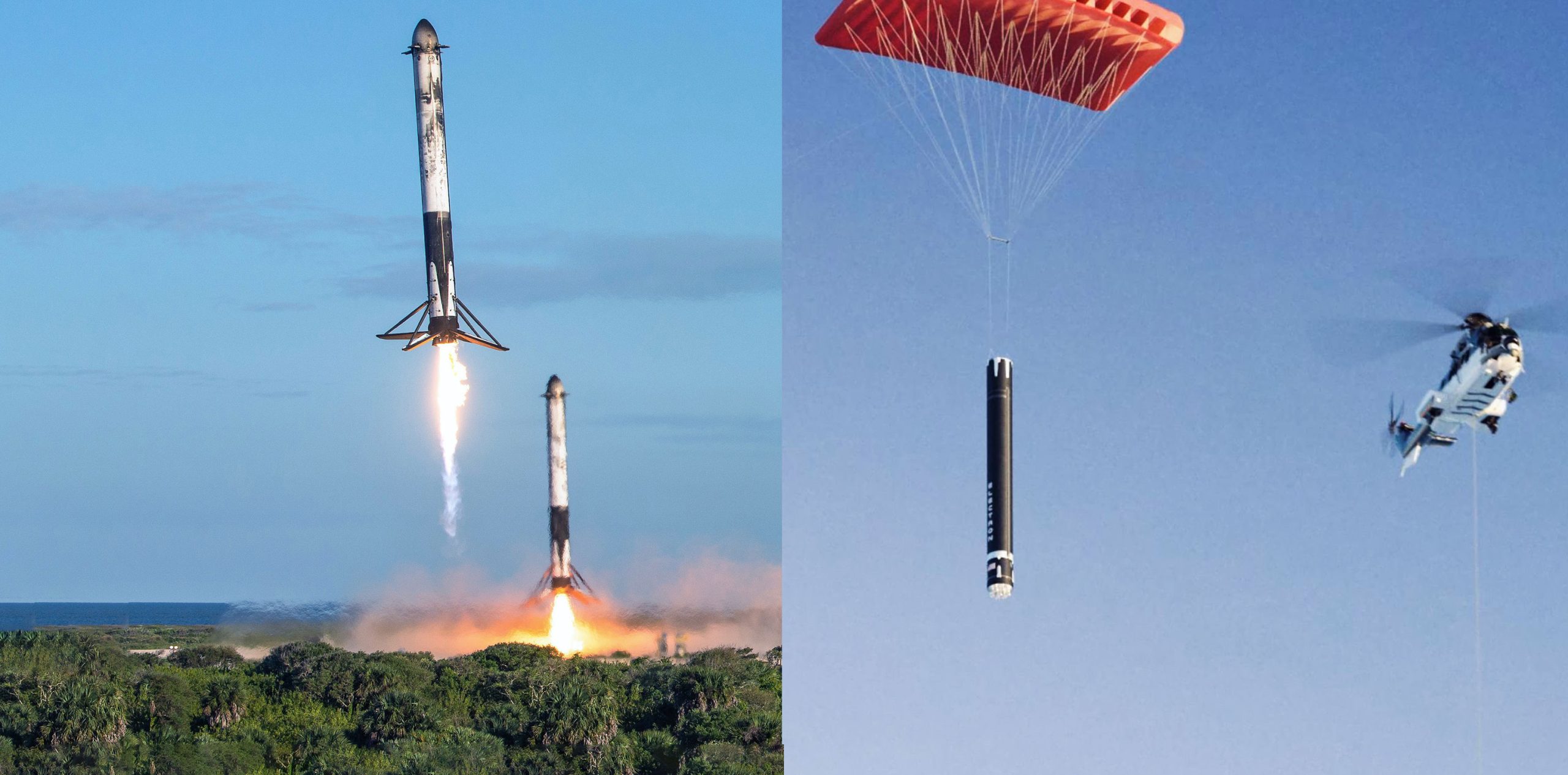
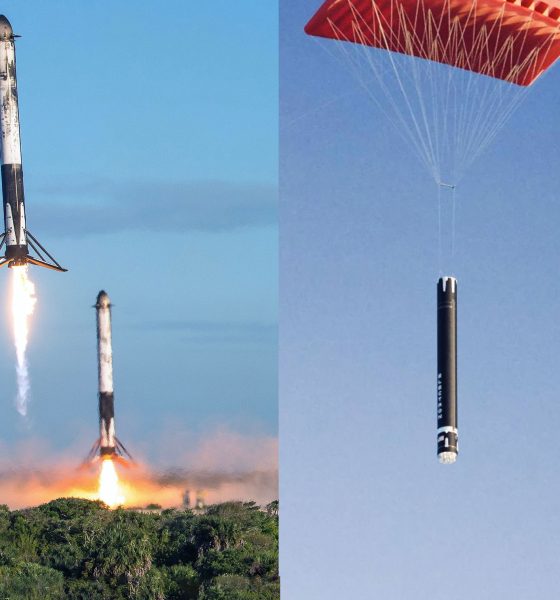
News
SpaceX’s Falcon 9 may soon have company as Rocket Lab reveals plans for Electron rocket reuse
The most prominent launcher of small carbon composite rockets, Rocket Lab, announced plans on Tuesday to recover the first stage of their Electron rocket and eventually reuse the boosters on future launches.
In short, CEO Peter Beck very humbly stated that he would have to eat his hat during the ~30-minute presentation, owing to the fact that he has vocally and repeatedly stated that Rocket Lab would never attempt to reuse Electron. If Rocket Lab makes it happen, the California and New Zealand-based startup will become the second entity on Earth (public or private) to reuse the boost stage of an orbital-class rocket, following SpaceX’s spectacularly successful program of Falcon 9 (and Heavy) recovery and reuse.
What is Rocket Lab?
Rocket Lab – headquartered in Huntington Beach, California – is unique among launch providers because they specialize in constructing and launching small carbon composite rockets that launch from the gorgeous Launch Complex 1 (LC-1) in Mahia, New Zealand. Their production facilities are located in Auckland, New Zealand, where they not only produce their own rockets but also 3D print Rutherford engines, the only orbital-class engine on Earth with an electric turbopump.
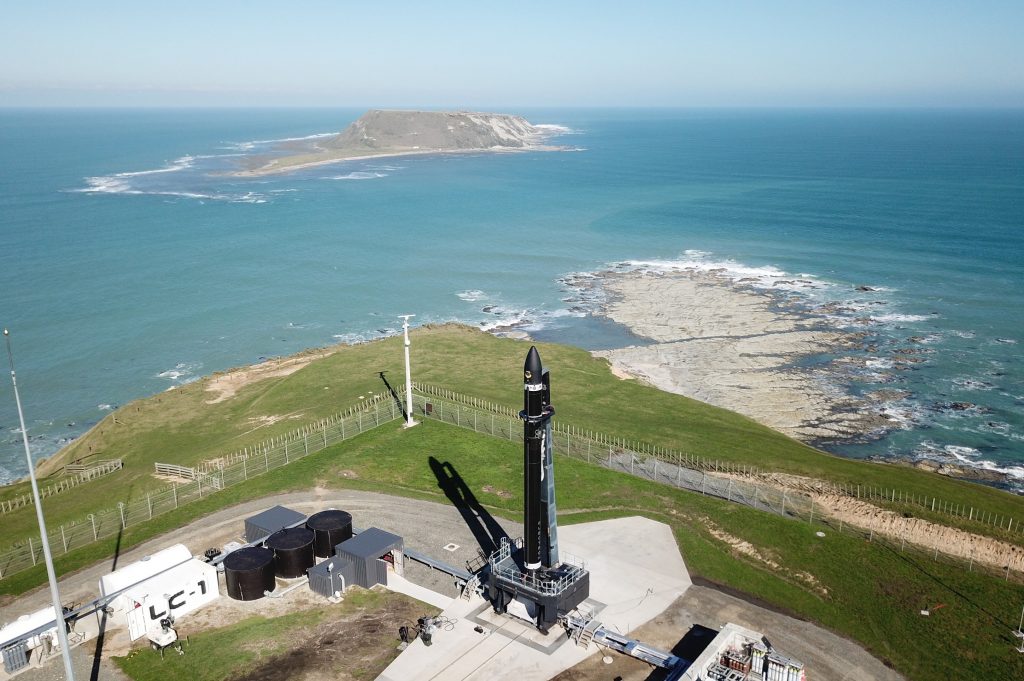
Electron’s 1.2-meter (4 ft) diameter body is built out of a super durable, lightweight carbon composite material that relies on custom Rocket Lab-developed coatings and techniques to function as a cryogenic propellant tank. It is powered by 9 liquid kerosene and oxygen (kerolox) Rutherford engines that rely on a unique electric propulsion cycle. The engine is also the only fully 3D-printed orbital-class rocket engine on Earth, with all primary components 3D-printed in-house at Rocket Lab’s Huntington Beach, CA headquarters. Pushed to the limits, a complete Rutherford engine can be printed and assembled in as few as 24 hours.
Currently, Rocket Lab is producing an Electron booster every 20-30 days and flies about once a month out of New Zealand. Since the first operational flight at the end of 2018 Rocket Lab has supported both commercial and government payloads. With a new launch complex (LC-2) coming online in Wallops, Virgina by the end of this year, they look to increase launch frequency, but also widen its market of customers. According to CEO Peter Beck, booster reuse could be a boon for Electron’s launch cadence.
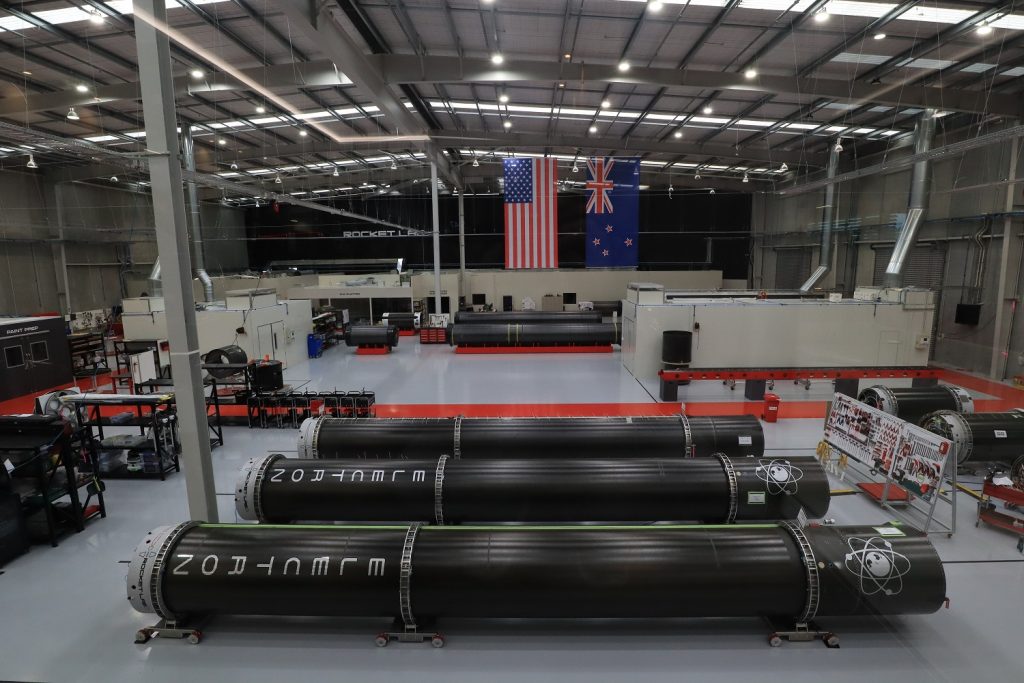
“Electron, but reusable.”
In the world of aerospace, SpaceX is effectively the only private spaceflight company (or entity of any kind) able to launch, land, and reuse orbital-class rockets, although other companies and space agencies have also begun to seriously pursue similar capabilities. Rocket Lab’s announcement certainly brings newfound interest to the private rocket launch community. Reuse of launch vehicle boosters – typically the largest and most expensive portion of any given rocket – is a fundamental multiplier for launch cadence and can theoretically decrease launch costs under the right conditions.
Rocket Lab hopes, more than anything, that recoverability will lead to an increase in their launch frequency and – at a minimum – a doubling of the functional production capacity of the company’s established Electron factory space. This will allow for more innovation and give the company more opportunities to “change the industry and, quite frankly, change the world,” according to founder and CEO Peter Beck.
Unlike like SpaceX’s Falcon 9, propulsive landing is not an option for the small Electron rocket. In fact, cost-effective recovery and reuse of vehicles as small as Electron was believed to be so difficult that Beck long believed (and openly stated) that Rocket Lab would never attempt the feat. Beck claims that in order to land a rocket on its end propulsively – by using engines to slow the booster while it hurdles back to Earth in the way the Falcon 9 booster does – would mean that their small rocket would have to scale up into the medium class of rockets. As Beck stated, “We’re not in the business of building medium-sized launch vehicles. We’re in the business of building small launch vehicles for dedicated customers to get to orbit frequently.”
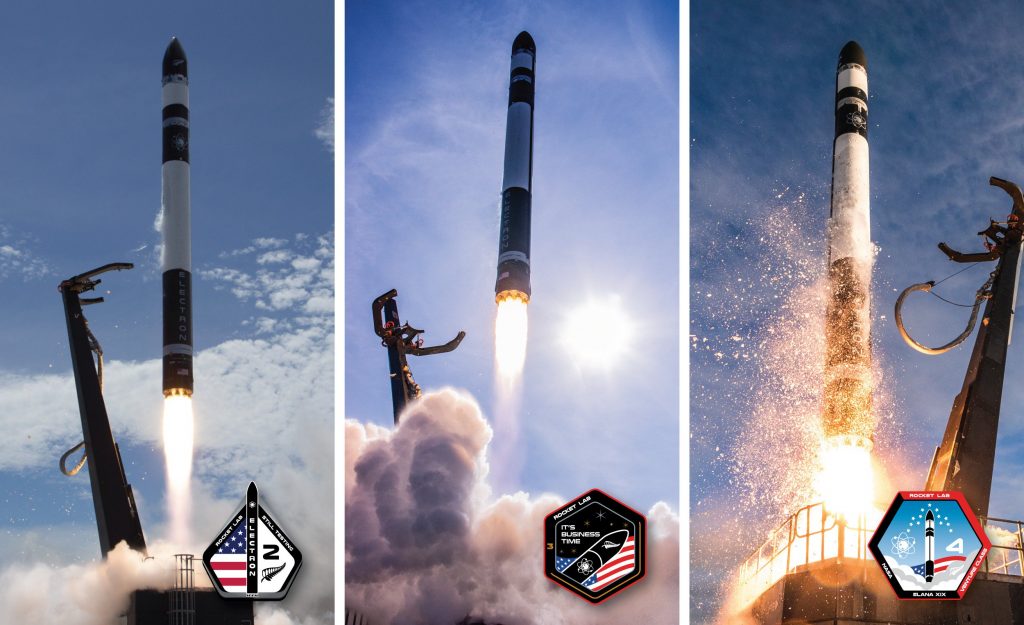
The main concern that Rocket Lab faces with the daunting task of not using propulsion to land is counteracting the immense amount of energy that the Electron will encounter on its return trip through the atmosphere. In order to return the booster in any sort of reusable condition they will have to decrease the amount of energy that the rocket is encountering which presents in the forms of heat and pressure from ~8 times the speed of sound to around 0.01 times the speed of sound. This decrease also needs to occur in around 70 seconds during re-entry and according to Beck “that’s a really challenging thing to do.” Beck went on further to explain that this really converts into dissipating about 3.5 gigajoules of energy which is enough energy to power ~57,000 homes.
Breaking through “The Wall”
When re-entering the atmosphere the energy that any spacecraft endures creates shockwaves of plasma which must be diverted away in order to protect the integrity of the spacecraft. An example of this can be seen during the re-entry of a SpaceX fairing half. Beck explains that “the plasma around those shockwaves is equal to about half the temperature of the (surface of the) sun” which can reach temperatures as high as 6,000 degrees fahrenheit. It also endures aerodynamic pressure equal to that of three elephants stacked on top of the Electron, according to Beck. His team refers to these challenges as breaking through “The Wall.”Beck explains that they will attempt to solve these problems differently using passive measures and aerodynamic decelerators.
The Wall is something that Beck and his team have been trying to tackle for some time now. Since the Electron began operational flights at the end of 2018 data has been collected to inform the problem solving process. In total Electron has successfully completed 7 flights, with its 8th scheduled to occur within the coming days. Beck explains that flights 6 and 7 featured data collection done through 15,000 different collection channels on board of Electron. The upcoming eighth flight will feature an advanced data recording system nicknamed Brutus. This new recording system will accompany Electron on the descent, but will survive while the booster breaks up as usual. It will then be collected and the data will be evaluated and used to further inform the decision making process for how to best help Electron survive its fall back to Earth.
Catching rockets with helicopters
Once Rocket Lab breaks through The Wall and effectively returns Electron without harm, the booster will need to be collected before splashing down into corrosive saltwater. This was demonstrated to be done via helicopter which according to Beck is “super easy.”
An animation depicts a helicopter leaving a dedicated recovery vessel to capture the Electron booster after it deploys a parafoil and begins gliding. The helicopter will intercept the booster’s parachute using a hook and will then carry the booster back to the recovery vessel, where technicians will carefully secure it.
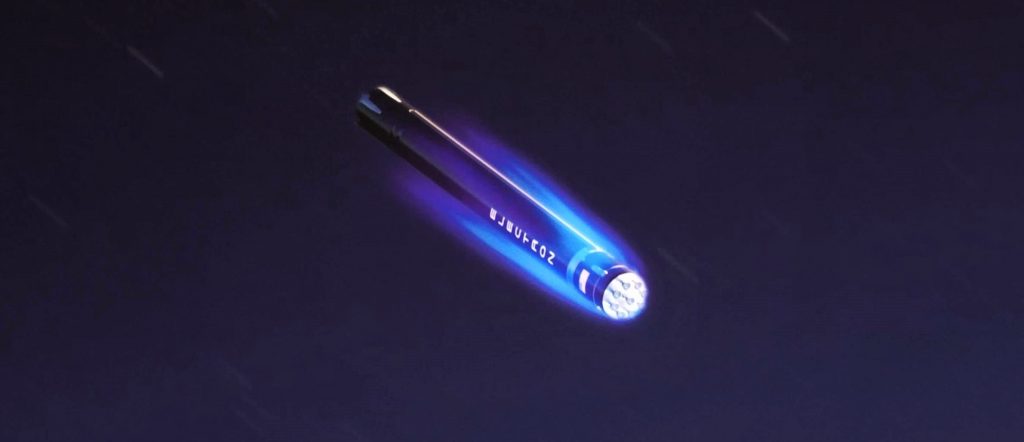
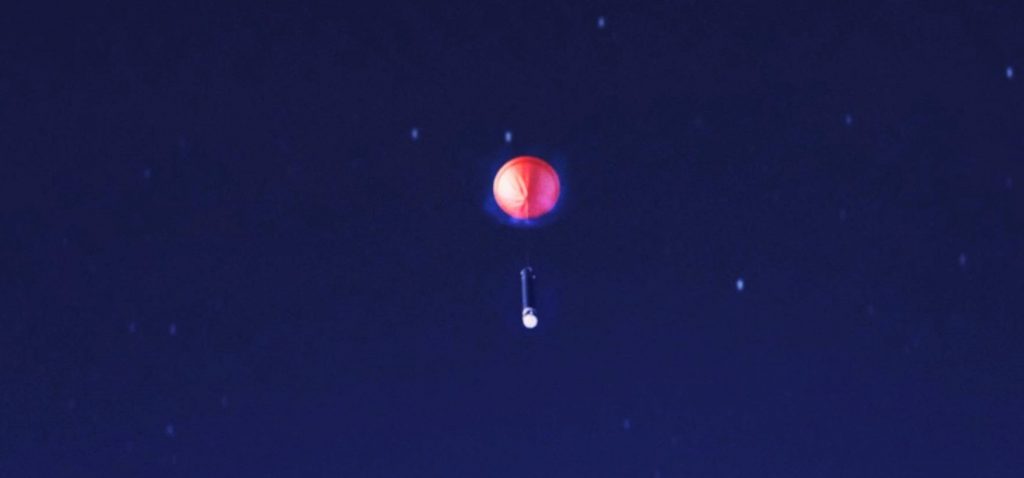

The entire goal of recovering a booster is to be able to reuse it quickly. Beck explains that since Electron is an “electric turbopump vehicle…in theory, we should be able to put it back on the pad, charge the batteries up, and go again.”
Although this goal is ambitious, it is one that – if achieved – will significantly impact the launch community in very positive ways. Not only will the option of rapid reusability open up, but so will opportunity for more agencies to engage in the world of satellite deployment. The Electron currently costs anywhere between $6.5 – 7 million per launch to fly. If the production cost of a new booster is removed space becomes attainable for many more customers.
Check out Teslarati’s Marketplace! We offer Tesla accessories, including for the Tesla Cybertruck and Tesla Model 3.

News
Tesla aims to combat common Full Self-Driving problem with new patent
Tesla writes in the patent that its autonomous and semi-autonomous vehicles are heavily reliant on camera systems to navigate and interact with their environment.

Tesla is aiming to combat a common Full Self-Driving problem with a new patent.
One issue with Tesla’s vision-based approach is that sunlight glare can become a troublesome element of everyday travel. Full Self-Driving is certainly an amazing technology, but there are still things Tesla is aiming to figure out with its development.
Unfortunately, it is extremely difficult to get around this issue, and even humans need ways to combat it when they’re driving, as we commonly use sunglasses or sun visors to give us better visibility.
Cameras obviously do not have these ways to fight sunglare, but a new patent Tesla recently had published aims to fight this through a “glare shield.”
Tesla writes in the patent that its autonomous and semi-autonomous vehicles are heavily reliant on camera systems to navigate and interact with their environment.

The ability to see surroundings is crucial for accurate performance, and glare is one element of interference that has yet to be confronted.
Tesla described the patent, which will utilize “a textured surface composed of an array of micro-cones, or cone-shaped formations, which serve to scatter incident light in various directions, thereby reducing glare and improving camera vision.”

The patent was first spotted by Not a Tesla App.
The design of the micro-cones is the first element of the puzzle to fight the excess glare. The patent says they are “optimized in size, angle, and orientation to minimize Total Hemispherical Reflectance (THR) and reflection penalty, enhancing the camera’s ability to accurately interpret visual data.”
Additionally, there is an electromechanical system for dynamic orientation adjustment, which will allow the micro-cones to move based on the angle of external light sources.
This is not the only thing Tesla is mulling to resolve issues with sunlight glare, as it has also worked on two other ways to combat the problem. One thing the company has discussed is a direct photon count.
CEO Elon Musk said during the Q2 Earnings Call:
“We use an approach which is direct photon count. When you see a processed image, so the image that goes from the sort of photon counter — the silicon photon counter — that then goes through a digital signal processor or image signal processor, that’s normally what happens. And then the image that you see looks all washed out, because if you point the camera at the sun, the post-processing of the photon counting washes things out.”
Future Hardware iterations, like Hardware 5 and Hardware 6, could also integrate better solutions for the sunglare issue, such as neutral density filters or heated lenses, aiming to solve glare more effectively.
Elon Musk
Delaware Supreme Court reinstates Elon Musk’s 2018 Tesla CEO pay package
The unanimous decision criticized the prior total rescission as “improper and inequitable,” arguing that it left Musk uncompensated for six years of transformative leadership at Tesla.

The Delaware Supreme Court has overturned a lower court ruling, reinstating Elon Musk’s 2018 compensation package originally valued at $56 billion but now worth approximately $139 billion due to Tesla’s soaring stock price.
The unanimous decision criticized the prior total rescission as “improper and inequitable,” arguing that it left Musk uncompensated for six years of transformative leadership at Tesla. Musk quickly celebrated the outcome on X, stating that he felt “vindicated.” He also shared his gratitude to TSLA shareholders.
Delaware Supreme Court makes a decision
In a 49-page ruling Friday, the Delaware Supreme Court reversed Chancellor Kathaleen McCormick’s 2024 decision that voided the 2018 package over alleged board conflicts and inadequate shareholder disclosures. The high court acknowledged varying views on liability but agreed rescission was excessive, stating it “leaves Musk uncompensated for his time and efforts over a period of six years.”
The 2018 plan granted Musk options on about 304 million shares upon hitting aggressive milestones, all of which were achieved ahead of time. Shareholders overwhelmingly approved it initially in 2018 and ratified it once again in 2024 after the Delaware lower court struck it down. The case against Musk’s 2018 pay package was filed by plaintiff Richard Tornetta, who held just nine shares when the compensation plan was approved.
A hard-fought victory
As noted in a Reuters report, Tesla’s win avoids a potential $26 billion earnings hit from replacing the award at current prices. Tesla, now Texas-incorporated, had hedged with interim plans, including a November 2025 shareholder-approved package potentially worth $878 billion tied to Robotaxi and Optimus goals and other extremely aggressive operational milestones.
The saga surrounding Elon Musk’s 2018 pay package ultimately damaged Delaware’s corporate appeal, prompting a number of high-profile firms, such as Dropbox, Roblox, Trade Desk, and Coinbase, to follow Tesla’s exodus out of the state. What added more fuel to the issue was the fact that Tornetta’s legal team, following the lower court’s 2024 decision, demanded a fee request of more than $5.1 billion worth of TSLA stock, which was equal to an hourly rate of over $200,000.
Delaware Supreme Court Elon Musk 2018 Pay Package by Simon Alvarez
News
Tesla Cybercab tests are going on overdrive with production-ready units
Tesla is ramping its real-world tests of the Cybercab, with multiple sightings of the vehicle being reported across social media this week.

Tesla is ramping its real-world tests of the Cybercab, with multiple sightings of the autonomous two-seater being reported across social media this week. Based on videos of the vehicle that have been shared online, it appears that Cybercab tests are underway across multiple states.
Recent Cybercab sightings
Reports of Cybercab tests have ramped this week, with a vehicle that looked like a production-ready prototype being spotted at Apple’s Visitor Center in California. The vehicle in this sighting was interesting as it was equipped with a steering wheel. The vehicle also featured some changes to the design of its brake lights.
The Cybercab was also filmed testing at the Fremont factory’s test track, which also seemed to involve a vehicle that looked production-ready. This also seemed to be the case for a Cybercab that was spotted in Austin, Texas, which happened to be undergoing real-world tests. Overall, these sightings suggest that Cybercab testing is fully underway, and the vehicle is really moving towards production.
Production design all but finalized?
Recently, a near-production-ready Cybercab was showcased at Tesla’s Santana Row showroom in San Jose. The vehicle was equipped with frameless windows, dual windshield wipers, powered butterfly door struts, an extended front splitter, an updated lightbar, new wheel covers, and a license plate bracket. Interior updates include redesigned dash/door panels, refined seats with center cupholders, updated carpet, and what appeared to be improved legroom.
There seems to be a pretty good chance that the Cybercab’s design has been all but finalized, at least considering Elon Musk’s comments at the 2025 Annual Shareholder Meeting. During the event, Musk confirmed that the vehicle will enter production around April 2026, and its production targets will be quite ambitious.








